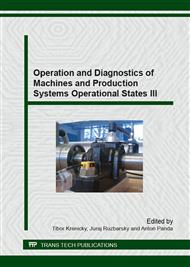p.228
p.235
p.243
p.253
p.262
p.270
p.278
p.286
p.294
Formation and Spreading of Cracks at Die due to Heat Fatigue
Abstract:
The moment of formation and spread of cracks on the surface of metal mould cavity is rather significant in the sphere of die casting due to durability of these costly tools and especially in case of casting of metals and alloys with higher melting temperature. The issue examination requires analysis of the thermal aspect of the process and of the mechanism of mechanical stress occurrence of material.For the purpose of verification of occurrence and spread of cracks the fragile materials were firstly tested in case of which inevitable number of cycles was possible to be considered acceptable for testing performance. The first tests were accompanied by the ring dipping with diameter of 60 mm with the central hole with diameter of 15 mm from alloy according STN 42 2420 standard, i.e. with dimensions reaching the used mould filler into molten salt at temperature of 1000°C for the period of 30 s with following dipping into water (20°C). The sample surface checking was performed visually after every 100 cycles.To make a comparison the dependence of length of cracks with circular samples with diameter of 12.7 mm made of material H11, H13, H21 and of steel Maraging.
Info:
Periodical:
Pages:
262-269
Citation:
Online since:
October 2015
Authors:
Keywords:
Price:
Сopyright:
© 2016 Trans Tech Publications Ltd. All Rights Reserved
Share:
Citation:


